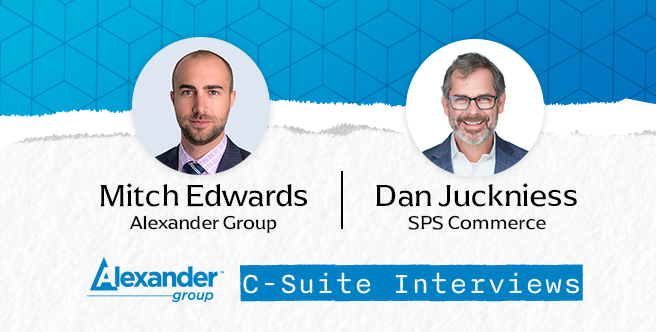Take a Deeper Look at Your Sales Compensation Plans

For many FinTech companies, ensuring sales compensation plans align with business and go-to-market strategies can be challenging, especially as business strategy evolves. While an annual refinement of sales compensation plans can address some changes, other strategy changes require the sales organization to reassess its sales compensation plans to restore alignment. So, what major triggers signal it is time to reevaluate sales compensation plans?
1. Product Offerings Evolve from Point Solutions to Platform Offerings
In the current market, companies that offer platforms have an ecosystem advantage over those that offer point solutions. Platform companies also find an edge with customers looking to consolidate vendors for greater price leverage and fewer vendors to manage.
As a result, point solution companies are aggressively working to identify how they can deliver greater value to their customers–often through establishing value-added services and transitioning to a platform.
These evolutions are changing the ways sales teams operate. Platform sellers must understand how all offerings interconnect to create value for the customer and leverage different resources rather than having deep product-level knowledge themselves. Then, once the seller lands a new customer on a platform, realizing the desired revenue requires post-sales resources to drive usage, a distinct skill set that the initial seller may not have
As these roles change, sales compensation plans must likewise change to maintain strategic alignment. To ensure compensation plans receive the necessary updates to guarantee alignment, leadership and sales organizations need to clearly define what go-to-market success looks like and what behaviors are needed while also considering the stage of transition to a platform. Key considerations include:
- Migration Deals: Are old clients being migrated from old technologies to the new platform? If yes, will the company get incremental revenue and what will this do to the compensation cost of sales, pending the speed of the migration? How much work will sellers need to put in to make the migration successful? Answering these critical questions can help ensure sellers are motivated to behave in alignment with company goals.
- Client Acquisition: When the sales focus of the new platform is on client acquisition, sellers will need to sell the platform value. Is your acquisition strategy to “land and expand” the platform, starting with a small part of the functionality? Or, is the goal to sell a platform with multiple modules in place out of the gate? This can impact sales cycles, deal complexity, number of buyers involved, average sales price and even the seller support resources required for success.
- Specialists: Evaluate whether specialists are needed to help execute the platform play. Is it possible for one seller to have deep enough knowledge of every platform offering? Can your technical sellers also manage executive-level relationship building? Some scenarios may benefit from a generalist driving the overall sale but pulling in specialists for detailed knowledge of critical platform modules that are important to a potential client.
2. Pricing Strategy Shifts from Uncommitted to Committed Contracts (or Vice Versa)
While most companies deploy multiple pricing models, they should ensure a priority pricing model is strategically aligned with the right segments or use cases. Thus, pricing models may shift towards committed or uncommitted contract pricing to align with sales goals, target markets or new use cases.
For companies switching from committed to uncommitted, the benefit is a sales process with less friction. Companies may secure more new customers since there is less of a commitment, but then find there is a greater need to drive usage and value realization to retain and expand the relationship with customers. Here are a few things sales organizations should consider about this change:
- How much time should sellers focus on realizing revenue compared to going after new logos? Will both objectives be part of the same seller’s remit?
- Are sellers are being paid at the point of influence for sales (and rewarded them for long sales cycles), or is there a need to balance the upfront payout with payouts once revenue is realized?
- Determine the pros and cons of splitting up earned pay based on factors including sales cycle, historical risk to revenue, integration issues, past behaviors, client risk, etc. Aligning payouts with realized revenue (which can be delayed due to long integrations or ramping volume) should be evaluated for seller motivational impact and market practices.
Companies transitioning from uncommitted contracts to committed can expect the opposite – the sales cycle becomes longer and introduces more friction. Still, this pricing approach is a practical option for companies looking to capture more revenue upfront and leverage a volume-based pricing model. With this change, organizations should:
- Expect more friction in the sales process so deal volume and new logos could slow as you gain more committed contracts, compared to customers on pay-as-you-go models.
- Understand whether sellers and account managers ensure usage-based volumes align with the committed value initially sold. These roles must ensure value is realized by the customer, otherwise risking customer dissatisfaction if they are oversold and overpaying.
Often, these decisions are influenced by customer behavior and demands. In the Fintech space, uncommitted contracts may be desired by customers who are looking to test a product but are unsure of how their stakeholders will respond. For others, committed contracts are the better choice because the cost is more dependable.
3. Seller Roles Change to Drive Consumption or Incremental Usage
Often, when companies shift to drive either consumption or incremental usage, the seller’s role will change significantly. There are many factors that may influence this change such as the buyer’s journey or what model competition is using to sell their products or platform. Thus, every sales organization faces a different situation, which requires a solution based on what is right for the organization at that time.
If a company is highly focused on usage and consumption volume, incentive plans require a strong alignment between the actual volume and acquiring the deal. If sellers can win the contract successfully, but momentum stalls and expected volume does not realize, there is greater risk for high churn from customers who didn’t find value in the product.
Striking the right balance between these elements may require continuous evolution in the early years. Ultimately, sales organizations seek to define:
- How quickly should sellers realize the consumption volume after signing and integration?
- What actions must the seller take to realize the expected volume?
- How can companies and job roles ensure customer expectations from the initial sale are met? This also entails being careful not to oversell the customer where customers experience negative reactions to ‘lost credits’ at renewal because they ‘over-committed’.
4. The Buyer Journey Evolves and Forces a Coverage Model Change
Without making the necessary coverage changes to align with the buyer’s journey, companies risk becoming misaligned with customer needs. To ensure that coverage aligns with the buyer, sales organizations need to deeply understand the buyer and their process. This requires sellers to monitor what changes are taking place in the market to understand what customers may be looking for. For example, when companies are evolving from a point solution to a platform offering, typically different stakeholders are involved in the buying process. With a point solution, one person may have been responsible for that purchase, but selling a platform with multiple offers requires multiple stakeholders. Shifts in the buyer journey can trigger coverage model changes.
Compensation plans must change when sales organizations make a fundamental coverage shift like moving from a single account owner to a bifurcated model, triggering cascading go-to-market changes. Moving to a bifurcated model can help keep a seller focused on the consumption or usage goals and process post-signing. Often, sellers require different skill sets to be successful in scaling usage and consumption vs. closing on new logos. As roles change, sales compensation plans will now focus on different behaviors and potentially different measures. With changes to the coverage model, FinTech companies should consider:
- Do new logo incentives require adaptation if a new distinct post-sale role is created? Will the new business seller no longer need to focus on renewals if appropriately covered by the post-sale role? Often a change in measure is needed to reflect the tightened focus of sales roles in a bifurcated model.
- Who will be responsible for expansion at the time of renewal? How will at-risk renewals be identified and compensated? Crediting mechanisms should be examined to ensure appropriate motivation for each seller type.
- Where will sellers need collaboration incentives for a smooth execution of the new types of sales roles? Secondary incentives can help renewal roles identify and hand off expansion opportunities and may be necessary to engage core sellers in at-risk renewals.
These four changes in go-to-market strategies have a significant impact on compensation plans.

Want More?
For more information about how FinTech companies are solving these compensation challenges, schedule a briefing today to learn more.



